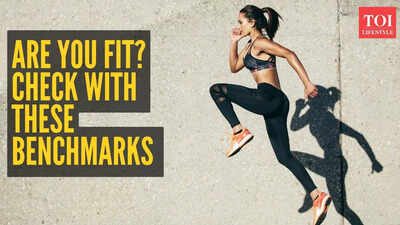Fitness looks different for everyone, but there are measurable indicators that can help you understand where you stand. Instead of focusing only on weight or appearance, researchers and health organisations recommend assessing strength, cardiovascular endurance, flexibility, and daily movement capacity. According to the American College of Sports Medicine (ACSM) and several large-scale studies published in journals such as The Lancet and JAMA, these functional benchmarks are better predictors of long-term health, mobility, and disease risk than body weight alone. Below are science-backed ways to evaluate your fitness in realistic, everyday terms.
Key benchmarks to measure your real health
Resting heart rate (RHR)
What it measures: Heart and cardiovascular efficiencyA lower resting heart rate generally indicates a healthier heart.
- Typical range: 60–100 beats per minute
- Fit range (ACSM): 50–60 bpm
- Athlete level: Below 50 bpm
VO₂ max or fitness walk test
What it measures: How well your body uses oxygen during exerciseVO₂ max is considered one of the strongest predictors of heart health and longevity. A 2018 JAMA Network Open study found that higher cardiorespiratory fitness directly correlates with longer life expectancy.If formal testing isn’t available:
- Walk 1 mile (1.6 km) briskly
- Target: Under 15 minutes without stopping
Grip strength
What it measures: Total muscle strength and healthy ageingResearch in The Lancet dentifies grip strength as a strong predictor of injury risk, mobility decline, and overall mortality.Benchmarks:
- Men: 40 kg+ = good
- Women: 25 kg+ = good
A simpler everyday measure: If you can comfortably open tight jars and carry heavy groceries, your grip strength is likely adequate.
Push-up test for upper body strength
A long-term Harvard study found that men able to complete 40 push-ups had a significantly lower risk of developing cardiovascular disease.Benchmarks:
- Men: 15–20 = average, 25+ = strong
- Women: 10–15 = average, 20+ = strong
This is widely used in physiotherapy evaluations.
- Sit in a chair and stand without using your hands.
- Repeat for 30 seconds.
Benchmarks:
- Ages 18–50: 18+ repetitions = good
- Ages 50+: 12+ repetitions = good
Flexibility check (sit and reach test)
Lower back and hamstring flexibility reduce injury risk.If you can comfortably touch your toes while seated, your baseline flexibility is considered functional.
Daily movement baseline
A 2025 Nature Medicine study suggests that 5,000–7,500 steps daily improve metabolic and cognitive health.
- Under 3,000: low movement
- 5,000–7,500: moderate
- 8,000–10,000+: high activity
Your fitness isn’t defined by how you look, but by how your body performs and recovers. These benchmarks offer a realistic foundation for evaluating and improving your health. Small, consistent progress matters more than perfection.Note: The information provided in this article is for educational purposes only and is not intended as medical advice. Always consult with a qualified healthcare professional before starting any new medication or treatment and before changing your diet or supplement regimen.

